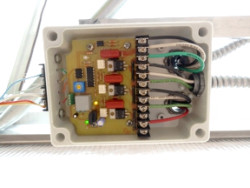First, Choose Your Assistant- Virtual voice-controlled assistants like Apple’s Siri, Google’s Assistant and Amazon’s Alexa make it easy to control smart home products by speaking simple commands like “Alexa, turn on the lights.” Each of these tools has its strengths and weaknesses, so choose the one that will be more likely to work for your needs:
CHOOSE YOUR HARDWARE
After you pick your virtual assistant, you’ll be able to choose a piece of hardware that will become your primary smart home controller.
Amazon’s Alexa: Echo Dot, Echo and Echo Show
Google’s Assistant: Google Home, Newer Android Smartphones
Apple’s Siri: iPhones, iPads and Apple Watch
The related reading below will help to guide your decision, but cost will likely play a factor, along with your need for a solid set of speakers or desire to have an additional device in your home in the first place.Then, the fun begins. With your virtual assistant you can set up your home a number of ways to make it “smarter.” Here’s a rundown of the different assistants and some products that work well with them.
Putting Your Assistant to Work
Alexa is the virtual assistant powering Amazon’s Echo products, including the Echo speaker, the miniature Echo Dot speaker and the Echo Show, a smart speaker with a touch screen. You summon it by saying “Alexa.”
If you want to quickly get started with a smart home, buying an Echo product is your best bet, because Alexa works with a broader set of smart home accessories than its rivals.
To set up your Alexa product you’ll first need to download the Alexa app onto your phone. This app allows your to add “skills” to work accessories or increase your assistant’s set of capabilities.
To find home accessories that are compatible with Alexa, look for a “Works With Alexa” logo on the packaging or in the product description.
CONTROLLING YOUR LIGHTS
A wide variety of smart lighting is on the market. While some systems require a so-called bridge, a device that connects with a Wi-Fi router and talks to the smart light, there are also smart light bulbs with a built-in Wi-Fi connection. Lifx is one of these that don’t require a bridge — so its setup is relatively simple. The bulbs are multi-colored and dimmable, but because they rely on Wi-Fi, their reliability will depend on your Wi-Fi router. You can also make your fans smart. Although there are no fans which can be directly connected to the internet but there are fan with remotes which can be controlled through your phones. Hence you can make your smart fans.
To use your Alexa to control a Lifx bulb, you will need:An Amazon Echo product
A Lifx bulb like the A19
An Apple or Android smartphone for setting up Alexa to talk to the bulb
CONTROLLING A FAN
There are many plug-in appliances, like fans, electric water kettles and coffee makers, that you probably wish were a little bit smarter. By plugging them into a smart plug, you use a personal assistant to do things like set a specific time for the kettle to heat water in the morning or switch the power on or off remotely. These rely on Wi-Fi to work, so their reliability will only be as good as your signal where they are located.
For this hypothetical example, we will set up a fan to work with Alexa and a smart plug from TP-Link. You will need:
An Amazon Echo product
A TP-Link smart plug
A plug-in fan with a physical power switch that can stay in the “on” position
An Apple or Android smartphone for setting up Alexa to talk to the smart plug
How to control an electric fan with Alexa using a TP-Link smart plug:
On your smartphone, download the Kasa app from the Apple or Android app store.
Open the Kasa app and register for an account. Once logged in, tap the Smart Plug icon.
Plug the Smart Plug into a power outlet. Plug your electric fan into the Smart Plug. The light on the plug will turn amber. In the Kasa app, follow the instructions to connect your smartphone to the plug.
In the Kasa app, give the Smart Plug a friendly name like “Fan.” Turn on the Remote Control option and follow the instructions to connect the plug to your Wi-Fi network.
Open the Amazon Alexa app. Tap the menu icon and select Skills. Search for the TP-Link Kasa skill and enable it.
In the Amazon Alexa app, tap the menu icon and select Smart Home.
Tap Devices, then tap Discover. The Alexa app will scan for devices and discover the smart plug labeled Fan.
Now test the fan. Make sure the fan’s power switch is in the “on” position. With your Echo nearby, say “Alexa, turn on the fan.” Then say, “Alexa, turn off the fan.”
